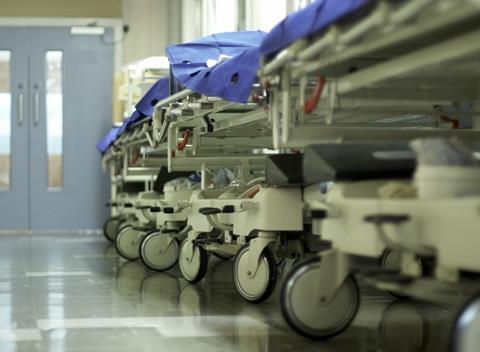Dr Suzette Woodward describes in her latest book a more positive approach to patient safety that seeks to learn how things normally happen in order to understand why they failed in that instance

The book Implementing Patient Safety asks and answers the question “why is healthcare not as safe as expected despite all of the concerted efforts over the last two decades?” The assertion is that there is a need to rethink the way we are currently approaching patient safety because if we continue to do as we have done so far we will languish in the business of adequacy.
Our work in healthcare safety to date has been to focus on the outliers of the system, for example where it doesn’t work such as incidents and where it is considered excellent practice. The aim is to manage that system by fixing the things that have deemed to have failed and requiring solutions that are considered to succeed.
Rather than looking at either or both tails of a normal distribution of outcomes, we should study the broad area in the middle, at the things that happen frequently or always, in the daily activities of the everyday clinical work that just functions and unfolds regularly as it should in order to understand how safe the system is.
This has been coined as safety II (Hollnagel 2014).
One of the crucial things we need to get right is that safety II does not replace safety I. Like many things in life the answer is in a balance of the two, an integration of the different thinking rather than the false binaries.
Safety II is safety I and safety II thinking – the two are brought together, keeping the practices that continue to work but abandoning or at the very least addressing the approaches, methods and tools that have been now proven to be false, myths or fallacies.
Equally, implementing safety II is not about dismissing the past or rejecting the safety I approach. Safety I should not be dismissed simply because it has failed; it is the way it has been implemented and continues to be done that is the problem rather than the founding principles of safety thinking.
One of the key challenges we face in patient safety today is how people behave towards each other and towards patients, service users and their families
Safety II helps dispel judgement, builds a consistent just culture and seeks to learn why a decision was made given the circumstances that the person faced, it studies how people adjust and adapt to make care safer and aims to replicate good practice or strengthen a system or process rather than simply changing it.
It is about learning how things normally happen in order to understand why it failed in this instance.
The book aims to provide a significantly more positive approach to patient safety because it moves people away from focusing people on their shortcomings, which doesn’t enable learning, it in fact impairs it.
It also moves us away from spending all of our time identifying failure as we see it and giving people feedback about how to avoid it, telling them to stop making mistakes.
The book also provides examples of how we can move from the rhetoric to action including the extremely useful methods for how we can study work-as-done and the adjustments and adaptions people make every day.
One of the key challenges we face in patient safety today is how people behave towards each other and towards patients, service users and their families. Building effective relationships, developing connections between people and clear conversations are crucial for helping people work safely.
The rudeness, incivility, bullying and inappropriate behaviours are eroding these relationships and connections.
Therefore, one of the most important things leaders can do in order to improve or maintain patient safety is to broaden the organisation’s response to patient safety to one that includes addressing these behaviours and creating a positive workplace, helping people make good decisions and cope with their daily dilemmas, build psychologically safe organisations (Edmondson 2019), role model kindness and say thank you.
When people are recognised for what they do they are 23 per cent more effective, and when they are appreciated they are 43 per cent more effective (Robbins 2019). To put it simply, to help people work safely leaders and organisations need to “care for the people that care”.
Three simple things that leaders can do now:
-
Reframe and redesign systems and processes by implementing safety II principles;
-
Understand, articulate and embed a just culture;
-
Understand the importance and benefits of focusing on joy, positivity, kindness, empathy, appreciation and gratitude and wellbeing. This means addressing the fundamental basic things that can cause people to be “unsafe”; fatigue, hunger, distractions, stress and fear of speaking up.
References
Brown B (2018) Dare to Lead Vermilion London
Edmondson A (2019) The fearless organisation: creating psychological safety in the workplace for learning, innovation and growth. Wiley
Hollnagel E (2014) Safety-I and Safety –II: The past and future of safety management. Ashgate / CRC Press
Robbins M (2019) Why We Need Appreciation (Not Just Recognition) at Work
Trzeciak and Mazzarell (2019) Compassionomics





























No comments yet